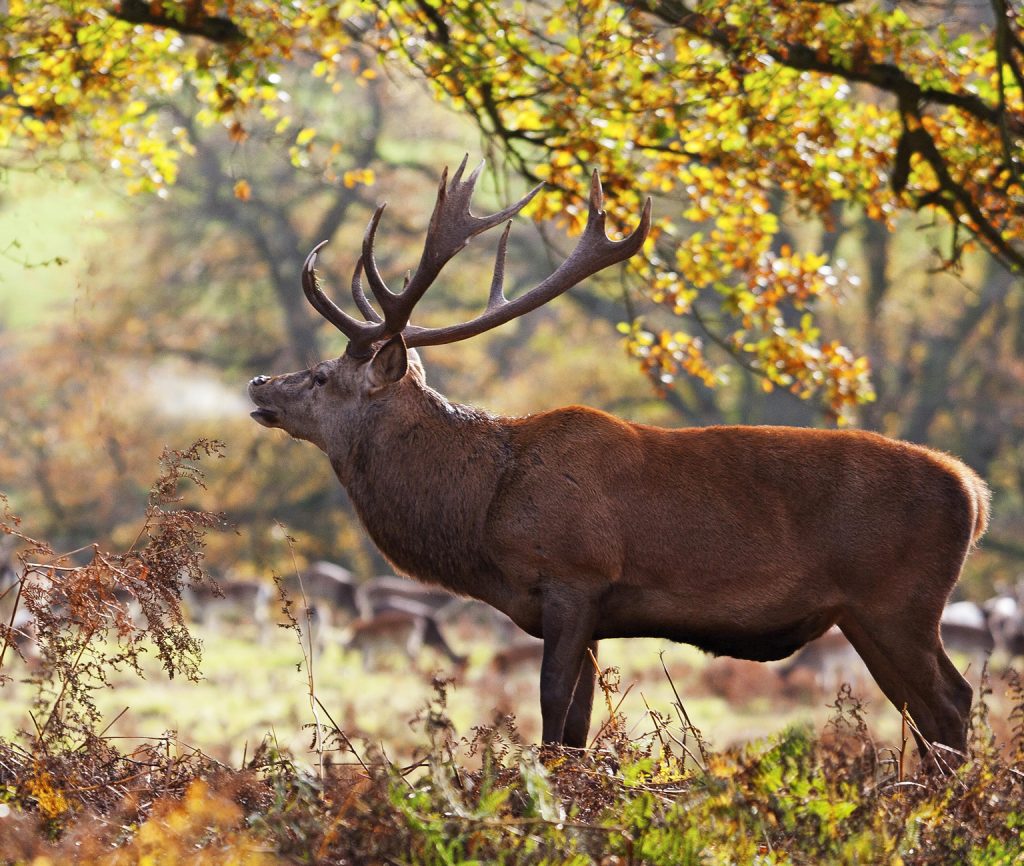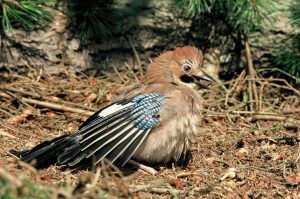Seeing Red
Recently, driving over the high ground of Dartmoor in the gathering dusk, I spied a surprisingly large herd of Red Deer. An impressively big stag stood surveying the scene as his harem slipped quietly into the shadows of autumn-tinged trees. Surely a scene to rival any Highland glen, yet this was mid Devon. As the drizzle swept in again my view faded and I began to wonder if I had just imagined the whole scene.
Encountering deer in Devon is not rare, usually the small Roe rather than the bigger Fallow and occasionally the large magnificent Red. Yet most mammals see or rather smell us from afar, perhaps half a mile or more away, giving them plenty of time to perform their usual disappearing trick. But the speed of modern motoring still catches many wild animals, as well as free roaming ponies, sheep and cattle unaware. Last year over a hundred farm stock were killed on Dartmoor’s unfenced roads and perhaps the same again maimed. Many of which would then have to be destroyed.
The true number of deer killed on British roads remains unknown, but I suspect high. Yet despite a 40mph speed limit across Dartmoor National Park, police are still catching motorists grossly exceeding the limit. Indeed, one was caught in recent years with a speed trap and fined for travelling in excess of 100 miles an hour. Hitting even a rabbit at that speed could cause serious damage to people in a car, let alone a heavyweight deer armed with a formidable set of antlers.
Testosterone fuelled risk taking is not just confined to car drivers. At this time of the year, shorter days and cooler conditions trigger the annual rut, when the mood of Red stags and Fallow bucks becomes extra feisty. Their hormones drive them to challenge other males and in the heat of battle they can suddenly dash across roads. For us it is safer to watch deer in parks during the Autumn, where they are more used to encountering people. While keeping your distance from any large animal and dogs under close control is sensible at any time of the year.
Since the last Ice Age ended some 12,000 years ago, native Red Deer have survived and thrived in many parts of Britain. Magnificent creatures that not only outlived the pursuits of people from the Stone Age to Tudor and even later times, but can still with just a glimpse thrill us in our hectic modern age.
Andrew Cooper
Encountering deer in Devon is not rare, usually the small Roe rather than the bigger Fallow and occasionally the large magnificent Red. Yet most mammals see or rather smell us from afar, perhaps half a mile or more away, giving them plenty of time to perform their usual disappearing trick. But the speed of modern motoring still catches many wild animals, as well as free roaming ponies, sheep and cattle unaware. Last year over a hundred farm stock were killed on Dartmoor’s unfenced roads and perhaps the same again maimed. Many of which would then have to be destroyed.
The true number of deer killed on British roads remains unknown, but I suspect high. Yet despite a 40mph speed limit across Dartmoor National Park, police are still catching motorists grossly exceeding the limit. Indeed, one was caught in recent years with a speed trap and fined for travelling in excess of 100 miles an hour. Hitting even a rabbit at that speed could cause serious damage to people in a car, let alone a heavyweight deer armed with a formidable set of antlers.
Testosterone fuelled risk taking is not just confined to car drivers. At this time of the year, shorter days and cooler conditions trigger the annual rut, when the mood of Red stags and Fallow bucks becomes extra feisty. Their hormones drive them to challenge other males and in the heat of battle they can suddenly dash across roads. For us it is safer to watch deer in parks during the Autumn, where they are more used to encountering people. While keeping your distance from any large animal and dogs under close control is sensible at any time of the year.
Since the last Ice Age ended some 12,000 years ago, native Red Deer have survived and thrived in many parts of Britain. Magnificent creatures that not only outlived the pursuits of people from the Stone Age to Tudor and even later times, but can still with just a glimpse thrill us in our hectic modern age.
Andrew Cooper



